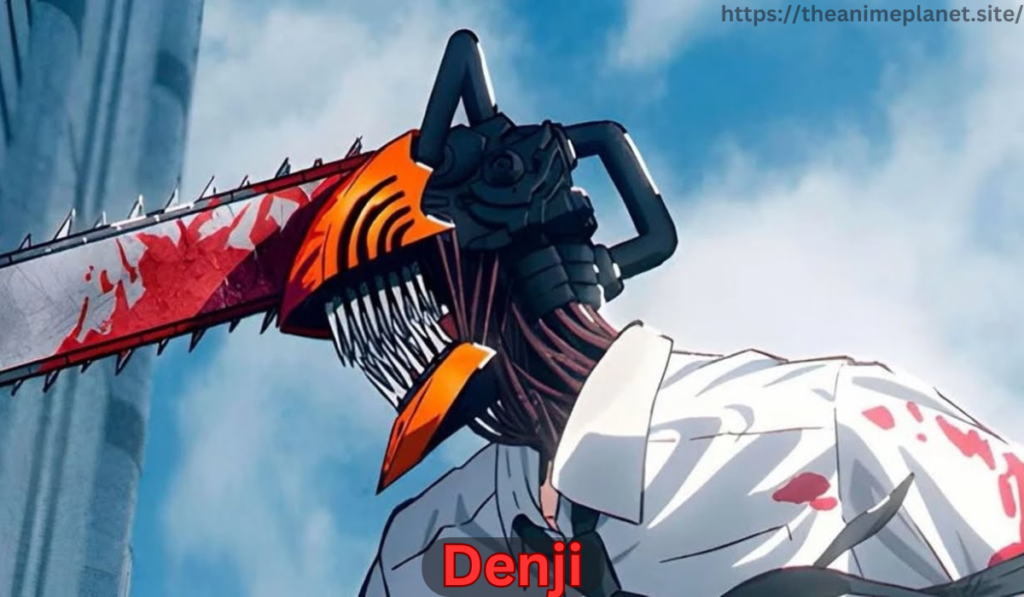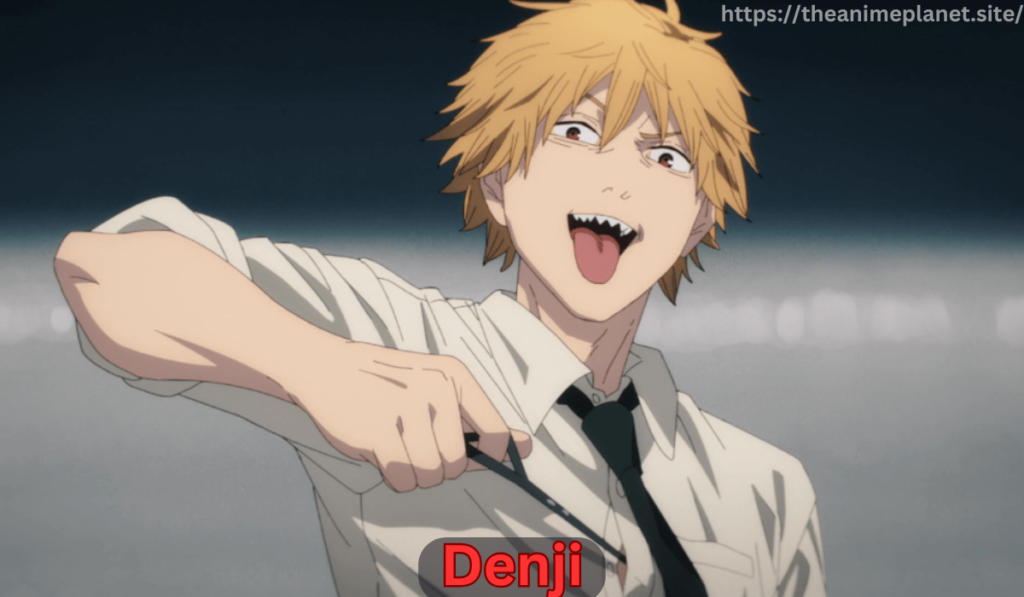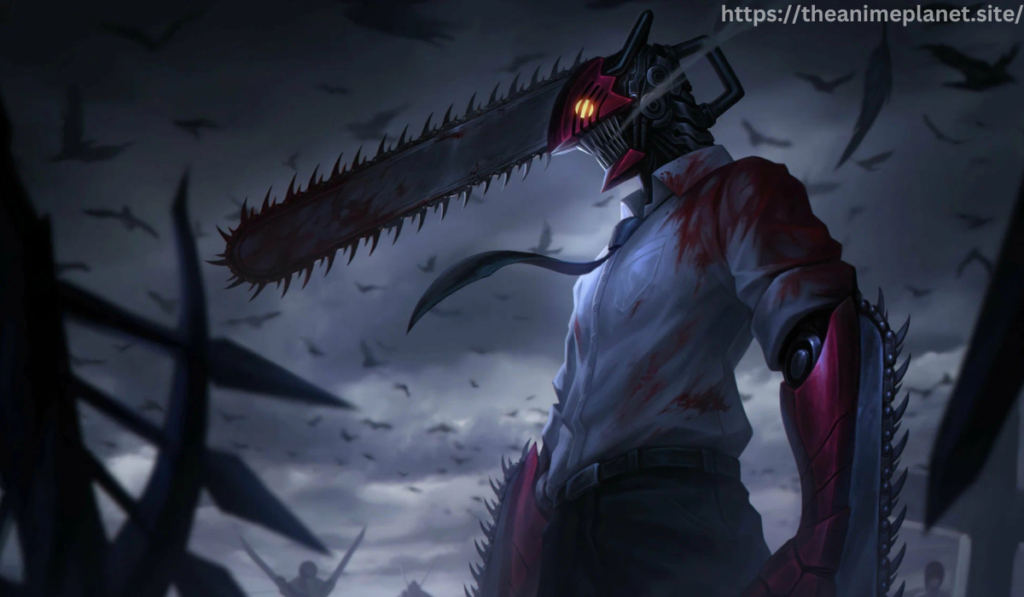Since its debut, Chainsaw Man has emerged as a defining work in the world of manga and anime, captivating audiences with its unique blend of horror, humor, and deep emotional storytelling. The series, created by Tatsuki Fujimoto, has not only pushed the boundaries of traditional shōnen narratives but has also introduced a fresh perspective on complex themes such as desire, fear, and the human condition. As we step into 2025, Chainsaw Man continues to garner attention and acclaim, solidifying its place in popular culture.
The anticipation surrounding the upcoming film adaptation, Chainsaw Man – The Movie: Reze Arc, set to release this year, is a testament to the series’ enduring popularity. Fans are eager to see how the cinematic portrayal will bring to life pivotal moments from the manga and further develop beloved characters like Denji and Makima. This film promises to delve deeper into character dynamics and explore the intricate relationships that have captivated readers since the manga’s inception.

In this blog post, we will explore the myriad reasons why Chainsaw Man remains a compelling narrative that resonates with fans around the globe. From its innovative storytelling techniques and richly developed characters to its cultural impact and artistic achievements, we will delve into what makes this series an enduring phenomenon in the ever-evolving landscape of anime and manga. As we unpack these elements, it becomes clear that Chainsaw Man is not just a story about devil hunting; it is a profound exploration of what it means to be human in a world filled with chaos and uncertainty.
The Genesis of Chainsaw Man
Before diving into the elements that make Chainsaw Man captivating, it’s essential to understand its origins. Created by Tatsuki Fujimoto, the series first appeared in Weekly Shōnen Jump in 2018. It quickly gained popularity for its unconventional approach to storytelling and character development. The story follows Denji, a young man burdened by debt and desperate for a better life. After merging with his pet devil, Pochita, he becomes Chainsaw Man, a devil hunter with the ability to transform parts of his body into chainsaws.
The Premise: A Darkly Comic World
At its core, Chainsaw Man presents a world where devils embody humanity’s fears and desires. This premise allows for a rich exploration of psychological themes while maintaining an engaging narrative pace. The blend of horror and dark comedy sets it apart from traditional shōnen titles, making it appealing to a broader audience.
Unique Storytelling and Themes
Subversion of Shōnen Tropes
One of the most striking aspects of Chainsaw Man is its subversion of typical shōnen tropes. While many shōnen series focus on themes of friendship, perseverance, and heroism, Chainsaw Man challenges these conventions by presenting a more cynical view of human nature. Denji’s motivations are often selfish; he desires basic comforts like food and companionship rather than lofty ideals. This refreshingly honest portrayal of ambition resonates with readers who appreciate realism in storytelling.
Exploration of Desire and Humanity
The series delves deeply into the complexities of desire—both human and devilish. Denji’s journey is marked by his struggle to understand what he truly wants out of life. Initially driven by simple pleasures like eating good food or experiencing intimacy, Denji’s desires evolve as he encounters various characters who challenge his understanding of love and connection.For instance, his relationship with Makima raises questions about power dynamics and manipulation in relationships. Makima embodies both allure and danger; her complex nature forces Denji to confront his own vulnerabilities. This interplay between desire and power is a recurring theme throughout the series, prompting readers to reflect on their own relationships.
The Nature of Fear
In Chainsaw Man, devils are manifestations of humanity’s fears—fear of death, fear of loss, fear of rejection. Each devil encountered by Denji represents different aspects of these fears. For example, the Gun Devil symbolizes societal fears surrounding violence and gun control. By personifying these fears as devils, Fujimoto creates a narrative that is not only thrilling but also deeply reflective.
Memorable Characters
Denji: A Relatable Protagonist

Denji stands out as one of the most relatable protagonists in modern manga. His flaws make him human; he grapples with insecurities, selfishness, and confusion about his identity. Unlike typical heroes who embody unwavering morals or ideals, Denji’s character arc is grounded in realism. His growth throughout the series—from a naive boy chasing simple pleasures to someone who begins to understand deeper emotional connections—resonates with readers navigating their own complexities.
Supporting Cast: Depth Beyond Stereotypes
The supporting characters in Chainsaw Man are equally compelling. Each character adds layers to the narrative while challenging Denji’s worldview:
- Power: A bloodthirsty devil who initially appears self-serving but gradually reveals her vulnerabilities. Her dynamic with Denji showcases themes of friendship and loyalty.
- Kobeni: Introduced as a timid character who surprises everyone with her combat skills. Kobeni represents the struggles many face when thrust into chaotic situations, highlighting themes of anxiety and survival.
- Makima: Perhaps one of the most enigmatic characters in the series, Makima embodies both maternal instincts and predatory behavior. Her complex relationship with Denji raises ethical questions about manipulation and control.
Each character serves as a mirror reflecting different facets of human nature—selfishness, loyalty, fear—and contributes significantly to Denji’s development.
Artistic Innovation
Unique Art Style
Tatsuki Fujimoto’s art style is distinctive and plays a crucial role in conveying the series’ tone. The artwork combines detailed illustrations with rough sketches that evoke raw emotion and intensity during action sequences. This juxtaposition enhances the chaotic atmosphere that permeates the story.
Visual Storytelling Techniques
Fujimoto employs innovative visual storytelling techniques that elevate key moments in the narrative:

- Dynamic Action Sequences: The fluidity of movement during battles captures the frenetic energy associated with devil hunting. Readers can feel the weight behind each swing of Denji’s chainsaws.
- Symbolism Through Imagery: Visual metaphors abound in Chainsaw Man. For instance, scenes depicting devils often include surreal elements that symbolize deeper psychological struggles faced by characters.
- Emotional Close-ups: Fujimoto frequently uses close-ups to capture characters’ expressions during pivotal moments—whether it’s fear during a confrontation or joy during fleeting moments of happiness—allowing readers to connect emotionally with their journeys.
Cultural Impact
Global Phenomenon
Since its release, Chainsaw Man has transcended cultural boundaries to become a global phenomenon. It has amassed millions of copies sold worldwide and has garnered critical acclaim for its innovative storytelling approach.
Awards and Recognition
The series has received numerous accolades within the manga community:
- Shogakukan Manga Award: Recognized for excellence in storytelling.
- Harvey Awards: Honored for outstanding graphic novels.
These awards underscore not only its popularity but also its impact on contemporary manga narratives.
Influence on Other Works
Chainsaw Man has influenced many creators within the industry. Its success has encouraged other authors to experiment with darker themes and unconventional storytelling techniques in their works. As more creators draw inspiration from Fujimoto’s approach, we may see a shift in how shōnen narratives are constructed moving forward.
Future Prospects
Upcoming Adaptations
As we move further into 2025, fans eagerly anticipate new adaptations related to Chainsaw Man. Following the success of its anime adaptation in late 2022/early 2023—which introduced new audiences to Denji’s world—the announcement of further adaptations has generated excitement among fans:
- Film Adaptation: A highly anticipated film focusing on key arcs promises enhanced animation quality and deeper exploration into character backstories.
- Spin-off Series: Rumors suggest potential spin-offs exploring secondary characters’ backstories or alternative timelines within the Chainsaw Man universe.
These adaptations will likely continue expanding upon existing narratives while introducing new viewers to this captivating world filled with devils and humanity’s struggles.
Community Engagement
The fan community surrounding Chainsaw Man remains vibrant as discussions about themes, character arcs, and theories flourish across social media platforms like Twitter and Reddit. Fan art showcasing beloved characters proliferates online spaces while cosplays at conventions highlight dedicated fandom engagement—further solidifying Chainsaw Man’s status as a cultural touchstone.
FAQ
1. What is Chainsaw Man about?
Chainsaw Man follows Denji, a young man who merges with his pet devil, Pochita, to become Chainsaw Man. He battles various devils while navigating the complexities of desire, fear, and human relationships in a world where devils embody humanity’s worst fears.
2. Who created Chainsaw Man?
The series was created by Tatsuki Fujimoto and first serialized in Weekly Shōnen Jump in 2018.
3. What are the main themes of Chainsaw Man?
Key themes include desire, fear, the nature of humanity, the complexities of relationships, and the struggle for identity.
4. Who are the main characters in Chainsaw Man?
Main characters include:
- Denji: The protagonist who becomes Chainsaw Man.
- Pochita: Denji’s pet devil who merges with him.
- Makima: A mysterious Public Safety Devil Hunter with her own agenda.
- Power: A bloodthirsty devil who becomes Denji’s ally.
- Kobeni: A timid but skilled devil hunter.
5. How does Denji’s character evolve throughout the series?
Denji evolves from a naive boy seeking basic pleasures to a more complex individual grappling with deeper emotional connections and moral dilemmas.
6. What makes Chainsaw Man different from other shōnen series?
Unlike typical shōnen narratives that focus on friendship and heroism, Chainsaw Man subverts these tropes by exploring darker themes and presenting morally ambiguous characters.
7. What is the significance of devils in the series?
Devils in Chainsaw Man represent humanity’s fears and desires. Each devil embodies specific societal anxieties, allowing for rich thematic exploration.
8. Is there an anime adaptation of Chainsaw Man?
Yes, an anime adaptation premiered in late 2022/early 2023, bringing the story and characters to a wider audience with high-quality animation.
9. How many volumes of Chainsaw Man are there?
As of now, there are multiple volumes published, with the original series concluding at Volume 11. A sequel titled Chainsaw Man Part 2 is ongoing.
10. What awards has Chainsaw Man won?
The series has won several awards, including the Shogakukan Manga Award and the Harvey Awards for its excellence in storytelling and art.
11. What is Denji’s relationship with Makima like?
Denji’s relationship with Makima is complex; she initially appears as a mentor figure but later reveals manipulative tendencies, challenging Denji’s understanding of love and power dynamics.
12. How does the art style contribute to the story?
Tatsuki Fujimoto’s unique art style combines detailed illustrations with rough sketches that enhance emotional intensity during action scenes and character moments.
13. Are there spin-off series related to Chainsaw Man?
Yes, there are spin-offs exploring different aspects of the Chainsaw Man universe and its characters, expanding on their backstories and adventures.
14. What impact has Chainsaw Man had on manga culture?
The series has influenced many creators to explore darker themes and unconventional storytelling methods in their works, reshaping contemporary manga narratives.
15. Can you explain Denji’s motivations throughout the series?
Denji’s motivations evolve from seeking basic comforts like food and companionship to grappling with deeper desires for connection, love, and purpose as he faces various challenges.
16. How does humor play a role in Chainsaw Man?
Humor is woven throughout the narrative, often contrasting with dark themes to create a unique tone that balances horror and levity, making serious moments more impactful.
17. What can fans expect from future adaptations of Chainsaw Man?
Fans can look forward to potential film adaptations focusing on key arcs and possibly more animated content that explores character backstories or alternative narratives within the universe.
18. Is Chainsaw Man suitable for all ages?
Due to its graphic violence, dark themes, and mature content, Chainsaw Man is generally recommended for older teens and adults rather than younger audiences.
19. How has the fan community engaged with Chainsaw Man?
The fan community actively engages through fan art, cosplay, discussions on social media platforms like Twitter and Reddit, and conventions celebrating their love for the series.
20. Where can I read or watch Chainsaw Man?
You can read Chainsaw Man through official manga platforms like VIZ Media or Shonen Jump. The anime adaptation is available on various streaming services such as Crunchyroll or Netflix. This FAQ section provides an informative overview of key aspects related to Chainsaw Man, catering to both new fans and those looking for deeper insights into the series!
Conclusion
In conclusion, Chainsaw Man continues to captivate audiences into 2025 due to its unique storytelling approach that subverts traditional shōnen tropes while exploring complex themes surrounding desire and fear through richly developed characters. Tatsuki Fujimoto’s artistic innovation enhances this experience by providing dynamic visuals that resonate emotionally with readers.As we look ahead at upcoming adaptations alongside ongoing community engagement surrounding this beloved series—it’s clear that Chainsaw Man will remain an influential force within both manga culture and broader entertainment landscapes for years to come.

